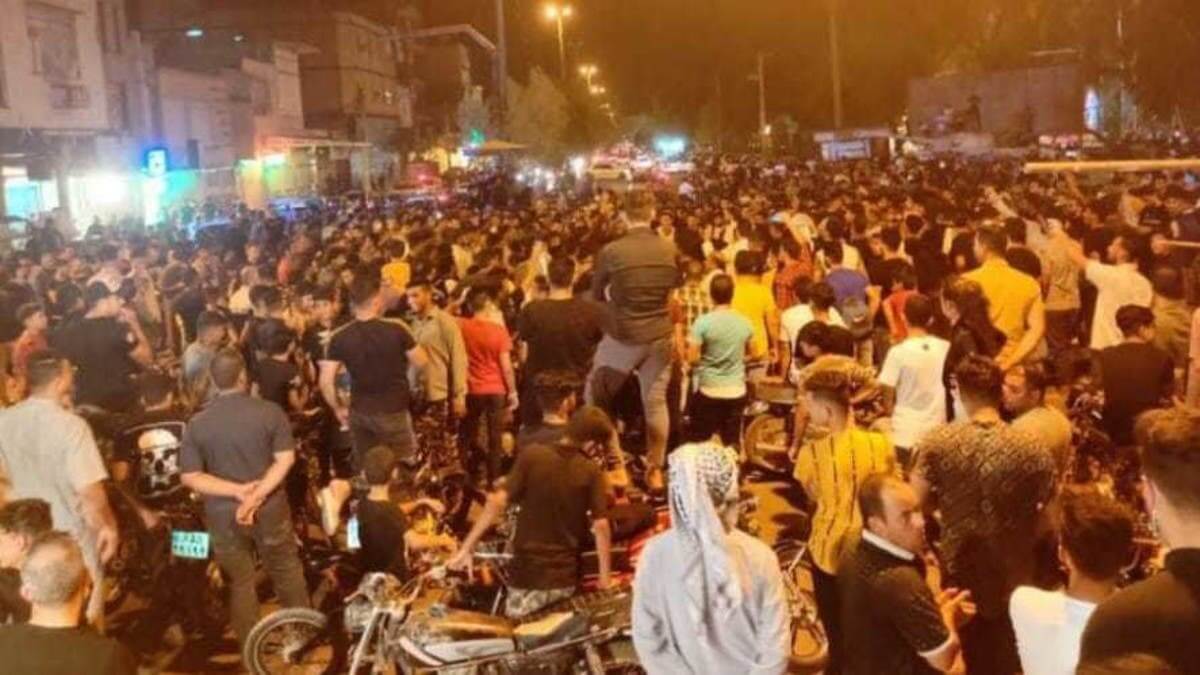Protests over water shortages in Iran’s Khuzestan province turned violent as security forces shot dead three protesters on Tuesday. The protests, which broke out on July 15 over government inaction to address Iran’s worst drought in 15 years, have persisted for seven days in a row and are spreading to new locations, including Esfahan and Tehran.
In Iran’s oil-rich Khuzestan province, people took to the streets last week, criticising the government’s mismanagement of the water crisis and demanding water supply. While news reporters face restrictions in Iran, social media users posted videos showing hundreds of protesters chanting against Iranian Supreme Leader Ayatollah Ali Khamenei in several towns and cities in Khuzestan, including the capital Ahvaz.
In addition to #Iran's Khuzestan Province, protests tonight are taking place in Yazadanshahr in Esfahan. https://t.co/iSdmT28Uy0
— Iran International English (@IranIntl_En) July 21, 2021
Iran International reported that protests have spread to other provinces, including Esfahan and Tehran, and videos received by the news site show protesters in Esfahan chanting slogans supporting Khuzestan. Moreover, the news site mentioned that protests erupted in a Tehran metro station on Tuesday, and the government has deployed anti-riot forces in the capital in anticipation of more demonstrations. It came as the government imposed a six-day lockdown in Tehran over a sudden surge in COVID-19 cases.
In reaction to the protests, security forces launched a brutal crackdown on agitators. According to reports, the government sent the notorious Basij paramilitary units to the site of protests, which, along with other police units, has killed at least seven people so far. In addition, the Associated Press reported that the government disrupted mobile phone internet services to bring the agitation under control. This amounted to “a near-total internet shutdown that is likely to limit the public’s ability to express political discontent or communicate with each other and the outside world,” said NetBlocks, an internet advocacy group.
However, the government has blamed protesters for inciting violence against the police. Iran’s official Islamic Republic News Agency (IRNA) stated that “rioters” killed a police officer on Wednesday and injured 14 other security officials so far. Hossein Amir-Abdollahian, the special aide to Parliament Speaker Mohammad Baqer Qalibaf, said that “terrorist groups” were trying to destabilise the country by shedding “tears of foreign crocodiles.” Abdollahian added that Iran strives for a peaceful and prosperous Khuzestan.
Meanwhile, Supreme Leader Khamenei tried to calm the situation by urging officials to address the problems faced by the people of Khuzestan adequately. “Officials are duty-bound to address the problems of Khuzestan, and if anyone cares about the people. No one can rest with comfort in the face of a difficult situation in Khuzestan if they care about people,” Khamenei wrote on his Instagram account. Yet, the protests have shown no sign of dying down.
Furthermore, on Wednesday, United States (US) State Department spokesperson Ned Price said that Washington is “closely following” the protests in Khuzestan. “We support the rights of Iranians to assemble and express themselves peacefully. Iranians, just like any other people, should enjoy those rights without fear of violence, without fear of arbitrary detention by security forces,” Price noted.
Iran has witnessed violent protests over water scarcity in the past too. In 2018, government forces and protesters clashed in Khorramshahr over water shortage. The IRNA stated that one primary reason behind Iran’s water shortages is a “sharp drop in rainfall”, over 40% lower than last year’s. Insufficient rain and high temperatures have led to Iran’s worst drought in over a decade, leaving dams with very little water to generate electricity, thereby leading to an increase in blackouts. The droughts combined with a surge in COVID-19 cases have worsened Iran’s economic crisis, which has been exacerbated by the continued and crippling sanctions imposed by the US.

